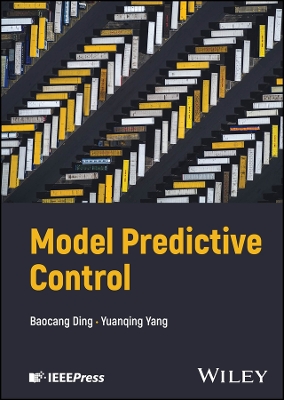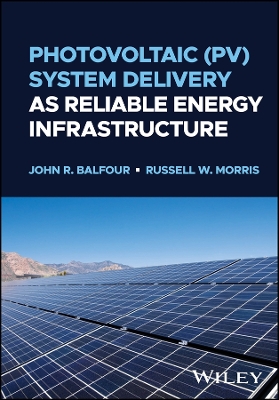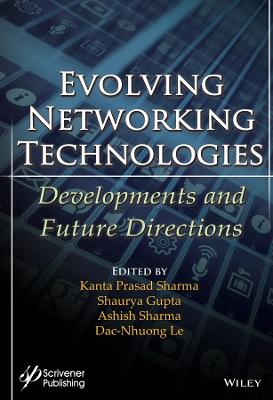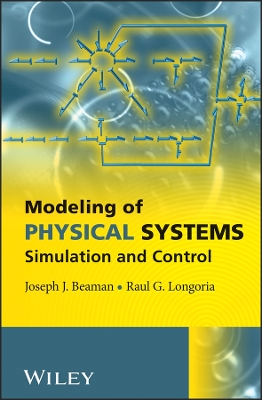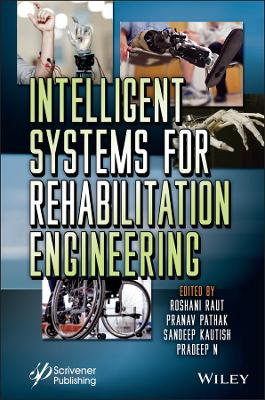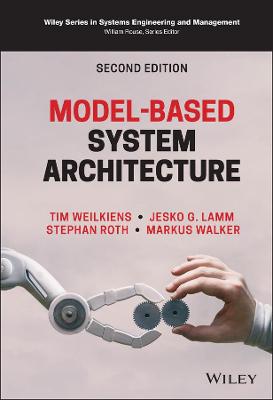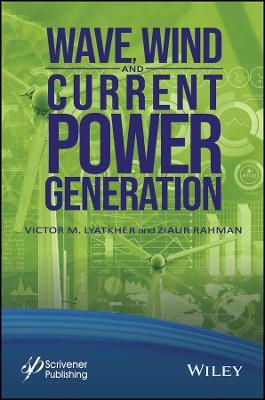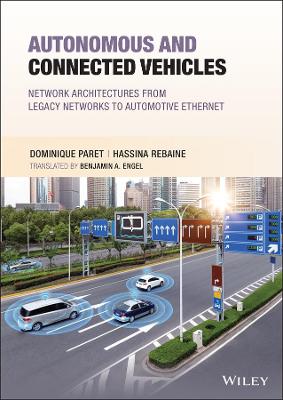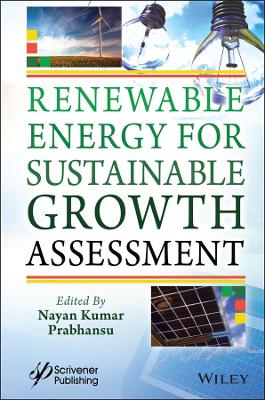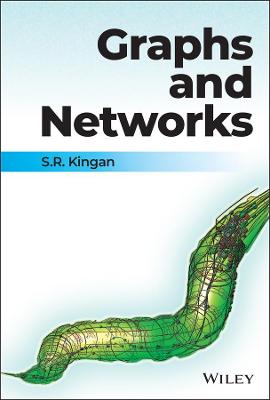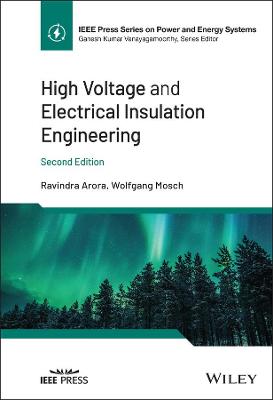Control Systems Engineering
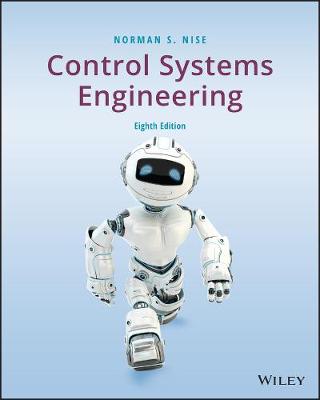 -15%
portes grátis
-15%
portes grátis
Control Systems Engineering
Nise, Norman S.
John Wiley & Sons Inc
06/2020
800
Mole
Inglês
9781119721406
15 a 20 dias
1322
1. Introduction 1
1.1 Introduction 2
1.2 A History of Control Systems 4
1.3 System Configurations 6
1.4 Analysis and Design Objectives 9
Case Study 11
1.5 The Design Process 14
1.6 Computer-Aided Design 19
1.7 The Control Systems Engineer 20
Summary 21
Review Questions 22
Cyber Exploration Laboratory 22
Bibliography 23
2. Modeling In The Frequency Domain 25
2.1 Introduction 26
2.2 Laplace Transform Review 27
2.3 The Transfer Function 36
2.4 Electrical Network Transfer Functions 39
2.5 Translational Mechanical System Transfer Functions 53
2.6 Rotational Mechanical System Transfer Functions 61
2.7 Transfer Functions for Systems with Gears 65
2.8 Electromechanical System Transfer Functions 69
2.9 Electric Circuit Analogs 75
2.10 Nonlinearities 78
2.11 Linearization 79
Case Studies 84
Summary 87
Review Questions 87
Cyber Exploration Laboratory 88
Hardware Interface Laboratory 91
Bibliography 93
3. Modeling In The Time Domain 95
3.1 Introduction 96
3.2 Some Observations 96
3.3 The General State-Space Representation 100
3.4 Applying the State-Space Representation 102
3.5 Converting a Transfer Function to State Space 110
3.6 Converting from State Space to a Transfer Function 116
3.7 Linearization 118
Case Studies 121
Summary 125
Review Questions 126
Cyber Exploration Laboratory 126
Bibliography 128
4. Time Response 130
4.1 Introduction 131
4.2 Poles, Zeros, and System Response 131
4.3 First-Order Systems 135
4.4 Second-Order Systems: Introduction 137
4.5 The General Second-Order System 142
4.6 Underdamped Second-Order Systems 146
4.7 System Response with Additional Poles 155
4.8 System Response with Zeros 159
4.9 Effects of Nonlinearities upon Time Response 165
4.10 Laplace Transform Solution of State Equations 167
4.11 Time Domain Solution of State Equations 171
Case Studies 175
Summary 181
Review Questions 182
Cyber Exploration Laboratory 183
Hardware Interface Laboratory 186
Bibliography 192
5. Reduction of Multiple Subsystems 194
5.1 Introduction 195
5.2 Block Diagrams 195
5.3 Analysis and Design of Feedback Systems 204
5.4 Signal-Flow Graphs 207
5.5 Mason's Rule 210
5.6 Signal-Flow Graphs of State Equations 213
5.7 Alternative Representations in State Space 215
5.8 Similarity Transformations 224
Case Studies 231
Summary 237
Review Questions 237
Cyber Exploration Laboratory 238
Bibliography 240
6. Stability 242
6.1 Introduction 243
6.2 Routh-Hurwitz Criterion 246
6.3 Routh-Hurwitz Criterion: Special Cases 248
6.4 Routh-Hurwitz Criterion: Additional Examples 254
6.5 Stability in State Space 261
Case Studies 264
Summary 266
Review Questions 266
Cyber Exploration Laboratory 267
Bibliography 268
7. Steady-State Errors 270
7.1 Introduction 271
7.2 Steady-State Error for Unity Feedback Systems 274
7.3 Static Error Constants and System Type 280
7.4 Steady-State Error Specifications 283
7.5 Steady-State Error for Disturbances 286
7.6 Steady-State Error for Nonunity-Feedback Systems 288
7.7 Sensitivity 291
7.8 Steady-State Error for Systems in 0State Space 294
Case Studies 297
Summary 300
Review Questions 301
Cyber Exploration Laboratory 302
Bibliography 303
8. Root Locus Techniques 305
8.1 Introduction 306
8.2 Defining the Root Locus 310
8.3 Properties of the Root Locus 312
8.4 Sketching the Root Locus 314
8.5 Refining the Sketch 319
8.6 An Example 328
8.7 Transient Response Design via Gain Adjustment 331
8.8 Generalized Root Locus 335
8.9 Root Locus for Positive-Feedback Systems 337
8.10 Pole Sensitivity 339
Case Studies 341
Summary 346
Review Questions 347
Cyber Exploration Laboratory 347
Hardware Interface Laboratory 349
Bibliography 356
9. Design Via Root Locus 358
9.1 Introduction 359
9.2 Improving Steady-State Error via Cascade Compensation 362
9.3 Improving Transient Response via Cascade Compensation 371
9.4 Improving Steady-State Error and Transient Response 383
9.5 Feedback Compensation 396
9.6 Physical Realization of Compensation 404
Case Studies 409
Summary 413
Review Questions 414
Cyber Exploration Laboratory 415
Hardware Interface Laboratory 417
Bibliography 419
10. Frequency Response Techniques 421
10.1 Introduction 422
10.2 Asymptotic Approximations: Bode Plots 427
10.3 Introduction to the Nyquist Criterion 446
10.4 Sketching the Nyquist Diagram 451
10.5 Stability via the Nyquist Diagram 456
10.6 Gain Margin and Phase Margin via the Nyquist Diagram 460
10.7 Stability, Gain Margin, and Phase Margin via Bode Plots 462
10.8 Relation Between Closed-Loop Transient and Closed-Loop Frequency Responses 466
10.9 Relation Between Closed- and Open-Loop Frequency Responses 469
10.10 Relation Between Closed-Loop Transient and Open-Loop Frequency Responses 474
10.11 Steady-State Error Characteristics from Frequency Response 478
10.12 Systems with Time Delay 482
10.13 Obtaining Transfer Functions Experimentally 487
Case Study 491
Summary 492
Review Questions 493
Cyber Exploration Laboratory 494
Bibliography 496
11. Design Via Frequency Response 498
11.1 Introduction 499
11.2 Transient Response via Gain Adjustment 500
11.3 Lag Compensation 503
11.4 Lead Compensation 508
11.5 Lag-Lead Compensation 514
Case Studies 523
Summary 525
Review Questions 525
Cyber Exploration Laboratory 526
Bibliography 527
12. Design Via State Space 528
12.1 Introduction 529
12.2 Controller Design 530
12.3 Controllability 537
12.4 Alternative Approaches to Controller Design 540
12.5 Observer Design 546
12.6 Observability 553
12.7 Alternative Approaches to Observer Design 556
12.8 Steady-State Error Design via Integral Control 563
Case Study 567
Summary 572
Review Questions 573
Cyber Exploration Laboratory 574
Bibliography 575
13. Digital Control Systems 577
13.1 Introduction 578
13.2 Modeling the Digital Computer 581
13.3 The z-Transform 584
13.4 Transfer Functions 589
13.5 Block Diagram Reduction 593
13.6 Stability 596
13.7 Steady-State Errors 603
13.8 Transient Response on the z-Plane 607
13.9 Gain Design on the z-Plane 609
13.10 Cascade Compensation via the s-Plane 612
13.11 Implementing the Digital Compensator 616
Case Studies 619
Summary 623
Review Questions 624
Cyber Exploration Laboratory 625
Bibliography 627
Problems P-1
Appendix A1 List of Symbols A-1
Appendix A2 Antenna Azimuth Position Control System A-5
Appendix A3 Unmanned Free-Swimming Submersible Vehicle A-7
Appendix A4 Key Equations A-8
Glossary G-1
Answers To Selected Problems ANS-1
Index I-1
Appendix B Matlab Tutorial (Available in e-text for students)
Appendix C Simulink Tutorial (Available in e-text for students)
Appendix D LabVIEW Tutorial (Available in e-text for students)
Appendix E MATLAB's GUI Tools Tutorial (Available in e-text for students)
Appendix F MATLAB's Symbolic Math Toolbox Tutorial (Available in e-text for students)
Appendix G Matrices, Determinants, and Systems of Equations (Available in e-text for students)
Appendix H Control System Computational Aids (Available in e-text for students)
Appendix I Derivation of a Schematic for a DC Motor (Available in e-text for students)
Appendix J Derivation of the Time Domain Solution of State Equations (Available in e-text for students)
Appendix K Solution of State Equations for t0 ? 0 (Available in e-text for students)
Appendix L Derivation of Similarity Transformations (Available in e-text for students)
Appendix M Root Locus Rules: Derivations (Available in e-text for students)
1. Introduction 1
1.1 Introduction 2
1.2 A History of Control Systems 4
1.3 System Configurations 6
1.4 Analysis and Design Objectives 9
Case Study 11
1.5 The Design Process 14
1.6 Computer-Aided Design 19
1.7 The Control Systems Engineer 20
Summary 21
Review Questions 22
Cyber Exploration Laboratory 22
Bibliography 23
2. Modeling In The Frequency Domain 25
2.1 Introduction 26
2.2 Laplace Transform Review 27
2.3 The Transfer Function 36
2.4 Electrical Network Transfer Functions 39
2.5 Translational Mechanical System Transfer Functions 53
2.6 Rotational Mechanical System Transfer Functions 61
2.7 Transfer Functions for Systems with Gears 65
2.8 Electromechanical System Transfer Functions 69
2.9 Electric Circuit Analogs 75
2.10 Nonlinearities 78
2.11 Linearization 79
Case Studies 84
Summary 87
Review Questions 87
Cyber Exploration Laboratory 88
Hardware Interface Laboratory 91
Bibliography 93
3. Modeling In The Time Domain 95
3.1 Introduction 96
3.2 Some Observations 96
3.3 The General State-Space Representation 100
3.4 Applying the State-Space Representation 102
3.5 Converting a Transfer Function to State Space 110
3.6 Converting from State Space to a Transfer Function 116
3.7 Linearization 118
Case Studies 121
Summary 125
Review Questions 126
Cyber Exploration Laboratory 126
Bibliography 128
4. Time Response 130
4.1 Introduction 131
4.2 Poles, Zeros, and System Response 131
4.3 First-Order Systems 135
4.4 Second-Order Systems: Introduction 137
4.5 The General Second-Order System 142
4.6 Underdamped Second-Order Systems 146
4.7 System Response with Additional Poles 155
4.8 System Response with Zeros 159
4.9 Effects of Nonlinearities upon Time Response 165
4.10 Laplace Transform Solution of State Equations 167
4.11 Time Domain Solution of State Equations 171
Case Studies 175
Summary 181
Review Questions 182
Cyber Exploration Laboratory 183
Hardware Interface Laboratory 186
Bibliography 192
5. Reduction of Multiple Subsystems 194
5.1 Introduction 195
5.2 Block Diagrams 195
5.3 Analysis and Design of Feedback Systems 204
5.4 Signal-Flow Graphs 207
5.5 Mason's Rule 210
5.6 Signal-Flow Graphs of State Equations 213
5.7 Alternative Representations in State Space 215
5.8 Similarity Transformations 224
Case Studies 231
Summary 237
Review Questions 237
Cyber Exploration Laboratory 238
Bibliography 240
6. Stability 242
6.1 Introduction 243
6.2 Routh-Hurwitz Criterion 246
6.3 Routh-Hurwitz Criterion: Special Cases 248
6.4 Routh-Hurwitz Criterion: Additional Examples 254
6.5 Stability in State Space 261
Case Studies 264
Summary 266
Review Questions 266
Cyber Exploration Laboratory 267
Bibliography 268
7. Steady-State Errors 270
7.1 Introduction 271
7.2 Steady-State Error for Unity Feedback Systems 274
7.3 Static Error Constants and System Type 280
7.4 Steady-State Error Specifications 283
7.5 Steady-State Error for Disturbances 286
7.6 Steady-State Error for Nonunity-Feedback Systems 288
7.7 Sensitivity 291
7.8 Steady-State Error for Systems in 0State Space 294
Case Studies 297
Summary 300
Review Questions 301
Cyber Exploration Laboratory 302
Bibliography 303
8. Root Locus Techniques 305
8.1 Introduction 306
8.2 Defining the Root Locus 310
8.3 Properties of the Root Locus 312
8.4 Sketching the Root Locus 314
8.5 Refining the Sketch 319
8.6 An Example 328
8.7 Transient Response Design via Gain Adjustment 331
8.8 Generalized Root Locus 335
8.9 Root Locus for Positive-Feedback Systems 337
8.10 Pole Sensitivity 339
Case Studies 341
Summary 346
Review Questions 347
Cyber Exploration Laboratory 347
Hardware Interface Laboratory 349
Bibliography 356
9. Design Via Root Locus 358
9.1 Introduction 359
9.2 Improving Steady-State Error via Cascade Compensation 362
9.3 Improving Transient Response via Cascade Compensation 371
9.4 Improving Steady-State Error and Transient Response 383
9.5 Feedback Compensation 396
9.6 Physical Realization of Compensation 404
Case Studies 409
Summary 413
Review Questions 414
Cyber Exploration Laboratory 415
Hardware Interface Laboratory 417
Bibliography 419
10. Frequency Response Techniques 421
10.1 Introduction 422
10.2 Asymptotic Approximations: Bode Plots 427
10.3 Introduction to the Nyquist Criterion 446
10.4 Sketching the Nyquist Diagram 451
10.5 Stability via the Nyquist Diagram 456
10.6 Gain Margin and Phase Margin via the Nyquist Diagram 460
10.7 Stability, Gain Margin, and Phase Margin via Bode Plots 462
10.8 Relation Between Closed-Loop Transient and Closed-Loop Frequency Responses 466
10.9 Relation Between Closed- and Open-Loop Frequency Responses 469
10.10 Relation Between Closed-Loop Transient and Open-Loop Frequency Responses 474
10.11 Steady-State Error Characteristics from Frequency Response 478
10.12 Systems with Time Delay 482
10.13 Obtaining Transfer Functions Experimentally 487
Case Study 491
Summary 492
Review Questions 493
Cyber Exploration Laboratory 494
Bibliography 496
11. Design Via Frequency Response 498
11.1 Introduction 499
11.2 Transient Response via Gain Adjustment 500
11.3 Lag Compensation 503
11.4 Lead Compensation 508
11.5 Lag-Lead Compensation 514
Case Studies 523
Summary 525
Review Questions 525
Cyber Exploration Laboratory 526
Bibliography 527
12. Design Via State Space 528
12.1 Introduction 529
12.2 Controller Design 530
12.3 Controllability 537
12.4 Alternative Approaches to Controller Design 540
12.5 Observer Design 546
12.6 Observability 553
12.7 Alternative Approaches to Observer Design 556
12.8 Steady-State Error Design via Integral Control 563
Case Study 567
Summary 572
Review Questions 573
Cyber Exploration Laboratory 574
Bibliography 575
13. Digital Control Systems 577
13.1 Introduction 578
13.2 Modeling the Digital Computer 581
13.3 The z-Transform 584
13.4 Transfer Functions 589
13.5 Block Diagram Reduction 593
13.6 Stability 596
13.7 Steady-State Errors 603
13.8 Transient Response on the z-Plane 607
13.9 Gain Design on the z-Plane 609
13.10 Cascade Compensation via the s-Plane 612
13.11 Implementing the Digital Compensator 616
Case Studies 619
Summary 623
Review Questions 624
Cyber Exploration Laboratory 625
Bibliography 627
Problems P-1
Appendix A1 List of Symbols A-1
Appendix A2 Antenna Azimuth Position Control System A-5
Appendix A3 Unmanned Free-Swimming Submersible Vehicle A-7
Appendix A4 Key Equations A-8
Glossary G-1
Answers To Selected Problems ANS-1
Index I-1
Appendix B Matlab Tutorial (Available in e-text for students)
Appendix C Simulink Tutorial (Available in e-text for students)
Appendix D LabVIEW Tutorial (Available in e-text for students)
Appendix E MATLAB's GUI Tools Tutorial (Available in e-text for students)
Appendix F MATLAB's Symbolic Math Toolbox Tutorial (Available in e-text for students)
Appendix G Matrices, Determinants, and Systems of Equations (Available in e-text for students)
Appendix H Control System Computational Aids (Available in e-text for students)
Appendix I Derivation of a Schematic for a DC Motor (Available in e-text for students)
Appendix J Derivation of the Time Domain Solution of State Equations (Available in e-text for students)
Appendix K Solution of State Equations for t0 ? 0 (Available in e-text for students)
Appendix L Derivation of Similarity Transformations (Available in e-text for students)
Appendix M Root Locus Rules: Derivations (Available in e-text for students)

